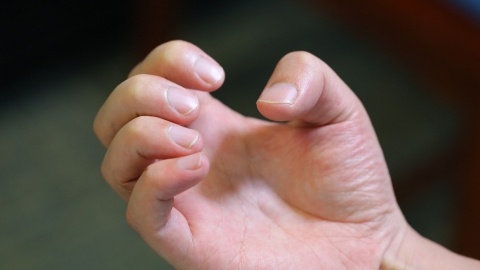How should wounds from hand injuries be cleaned?
Under normal circumstances, the main methods for cleaning hand wounds include rinsing the wound, removing foreign objects, disinfecting the wound, covering and protecting it, and subsequent dressing changes. If a wound occurs due to hand injury, prompt and proper cleaning and treatment are necessary to prevent infection. Specific steps are as follows:
1. Rinsing the Wound
Rinse the wound continuously with flowing clean water for 5–10 minutes. Running water helps remove dust, dirt, and other contaminants from the wound surface, reducing bacterial adhesion and the risk of infection, while also preventing residual debris from continuously irritating the wound.

2. Removing Foreign Objects
If small foreign objects are clearly visible within the wound, gently wipe them away using a sterile cotton swab. Do not forcibly dig out deeply embedded or difficult-to-remove objects. Instead, repeatedly flush the wound with saline solution, or seek medical attention for professional management to avoid damaging wound tissue.
3. Disinfecting the Wound
After rinsing, use a sterile cotton swab dipped in povidone-iodine to disinfect the wound in a spiral motion from the center outward. The disinfection area should extend to about 5 cm around the wound. Povidone-iodine effectively kills bacteria, fungi, and other microorganisms on the wound surface, further preventing infection, and has relatively low irritation.
4. Covering and Protecting the Wound
After disinfection, allow the povidone-iodine to dry, then cover the wound with sterile gauze or a breathable adhesive bandage. Ensure the gauze lies flat and is not wrapped too tightly, which could compress the wound. Covering the wound isolates it from external dust and bacteria, protects against secondary injury, and maintains a moist healing environment conducive to recovery.
5. Subsequent Dressing Changes
If the wound is small and there is no significant exudate, change the dressing once daily. For wounds with substantial drainage, increase the frequency of dressing changes. During each dressing change, re-clean and re-disinfect the wound, and observe the healing progress, promptly identifying any abnormalities such as redness, swelling, or discharge.
In daily care, keep the wound and dressing dry, and avoid contact with dirty water or contaminants. Seek immediate medical attention if signs of worsening redness and swelling, severe pain, pus-like discharge, or systemic symptoms such as fever develop. During recovery, minimize movement of the injured area to avoid tension on the wound and promote smooth healing.





